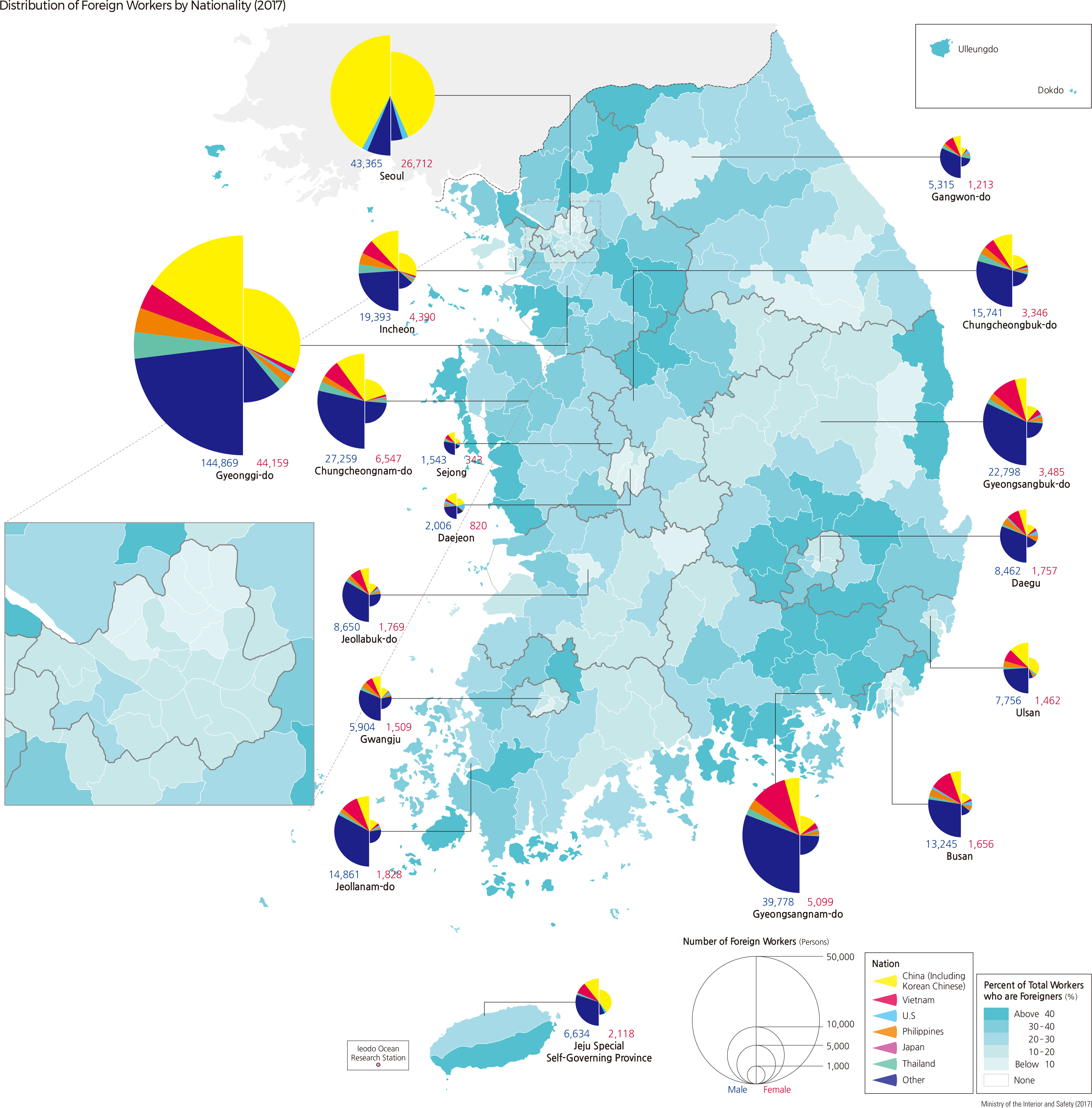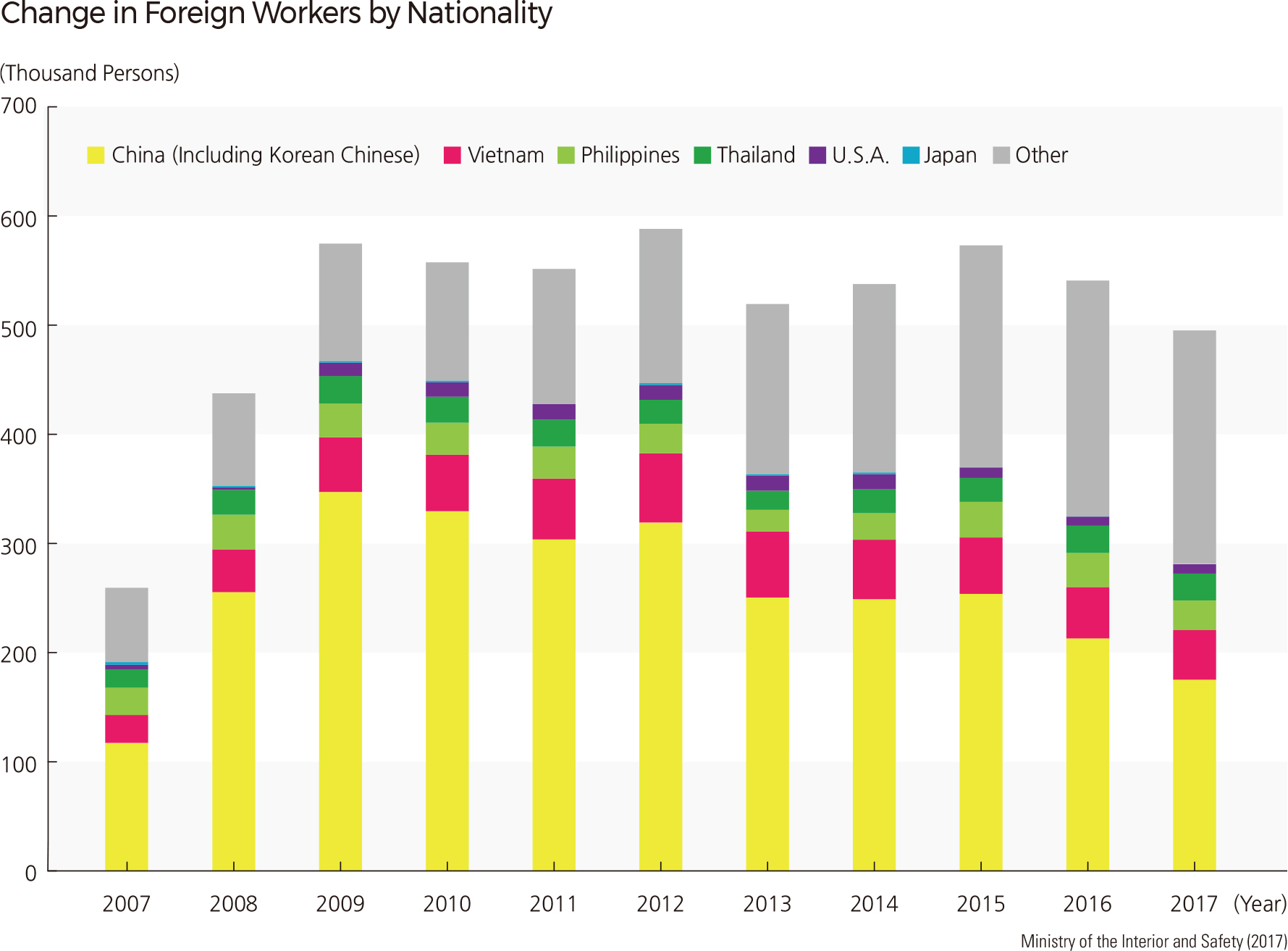English I 2019
As of 2017, there were about 1.48 million immigrant workers in Korea, accounting for 26.7% of all foreign residents. In the past, most foreign workers were professionals, including professors, foreign language educators, researchers, and technical guides. In the 1990s, however, there was a large influx of unskilled laborers in the manufacturing and construction industries, which nevertheless suffered from a workforce shortage due to rising wages and decreasing Korean workers. Currently, the foreigner employment permit system and the visiting employee system are resolving the labor shortage. The foreigner employment permit system, introduced in 2004, is a system that allows domestic companies to legally hire laborers from countries that have signed a workforce introduction contract, guaranteeing equal treatment with domestic workers. On the other hand, the visiting employee system was introduced in 2007 to give priority to overseas Korean workers; most of the workers who came in through the program are Korean Chinese.
Professional foreign workers, mainly from developed countries, live in large cities and often concentrate in a neighborhood by country of origin. In Seoul, the French live in Seorae village in Seocho-gu, and the Japanese live in Ichon-dong in Yongsan-gu. On the other hand, foreign workers in unskilled labor jobs live in residential areas near industrial complexes, like Wongok-dong in Ansan-si, Magok District in Namyangju-si, Jeongwang-dong in Siheung-si, and Dalseo-gu in Daegu-si. Korean Chinese generally work in the service industry, such as catering, housekeeping, and caregiving, and often reside in low-cost residential areas in large cities. In the case of Seoul, Garibong-dong, Guro-dong in Guro-gu, Doksan-dong in Geumcheon-gu, and Daelim-dong in Yeongdeungpo-gu are popular choices. |

